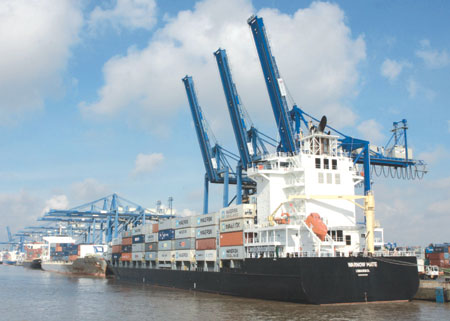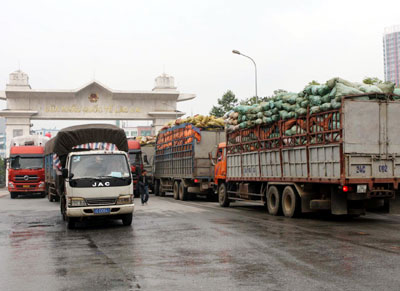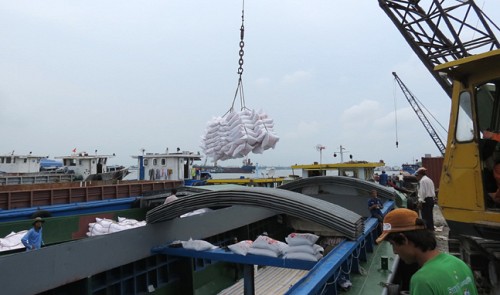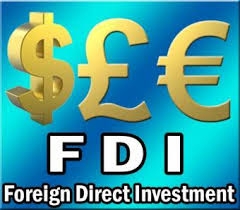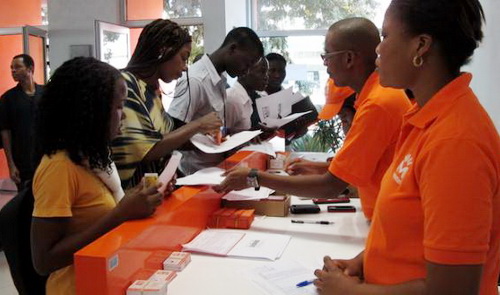Overly rapid growth scare businesses stiff
Overly rapid growth scare businesses stiff
Vietnamese businesses, which tried to obtain rapid growth at any costs have become the victims of their rapid development policy.
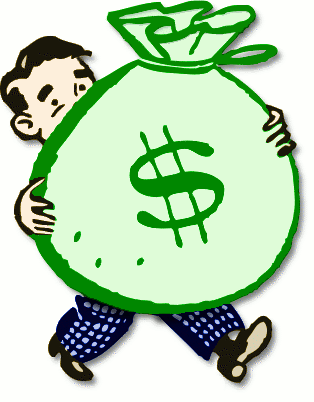
Unlike the previous years, the businesses named in the 2012 FAST500 list (the 500 Vietnamese fastest growing enterprises) talked about their achievements in a cautious manner. Meanwhile, economists have voiced their concern about the overly hot, but unsustainable development of the majority of Vietnamese businesses.
The part of the iceberg under water
The enterprises named in the 2012 FAST500 list are considered the most dynamic ones of the national economy. With the average high growth rate of 62 percent in 2008-2011, higher than the 57 percent growth rate in 2007-2010, the enterprises have been assigned the heavy responsibility of making a breakthrough in the current difficulties.
Especially, they are expected to become the redoubtable rivals to the foreign invested enterprises in the future.
The 2012 FAST500 list comprises of many real estate firms and commercial banks.
However, economists have pointed out the “part of the iceberg under the water.” Only 26 percent of the enterprises with the turnover increasing by two folds have the proportional profit growth for the same periods.
“After Vietnam joined WTO, Vietnamese businesses have been growing rapidly in terms of operation scale, but their business efficiency has not increased accordingly,” noted Phung Hoang Co, Vice President of Vietnam Report, the author of the 2012 FAST500.
The debt increase, debt insolvency weakening, and the business disappearance
The latest report of the Vietnam Chamber of Commerce and Industry (VCCI) --the full version of which is to be released soon, showed the decline in the businesses’ operation effectiveness.
“The capital use efficiency of enterprises has been decreasing, while businesses have been relying on borrowed capital to maintain their operation,” the report reads.
The report pointed out that in 2009-2011, the debt interest payment capability index decreased by 5 times to 3.5, while the debt index had increased by 2.3 times by 2011.
The indexes were found after considering the statistics about the performance of the enterprises in the six important business fields, including seafood processing, drink production, metal composition production, food-drink retail, advertisements and trade promotion.
These business fields have caught the special attention from surveyors because of their high growth rates, though they are not the “hot” business fields in the eyes of investors.
The 2012 FAST500 report showed that chemical, mechanical engineering and food & drink manufacturers led in terms of the asset use effectiveness with the ROAs (return on asset) at 12.25, 12.36 and 12.44 percent, respectively.
According to the Ministry of Planning and Investment, in the first quarter of 2013, the number of enterprises in the finance and banking sector increasing by 134.4 percent over the same period of 2012, while the proportion was 47.6 percent for real estate firms. This shows that the high growth rate of the enterprises could not help them survive the negative changes in the national economy.
Especially, some businesses named in the 2012 FAST500 have disappeared from the market because of the bad business performance. SME Securities Company, for example, was considered one of the fastest growing enterprises at the time the survey was conducted. However, it has left the market as it cannot stand the current difficulties.
Thai Hoa Group, one of the leading coffee manufacturers in Vietnam, once topped the 2011 FAST500 list, has incurred the accumulative debt of over VND400 billion








